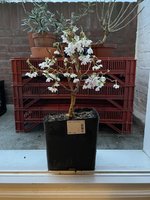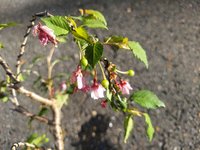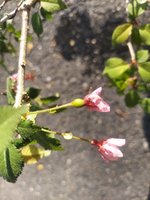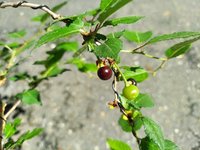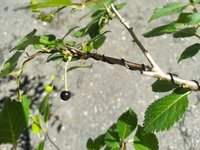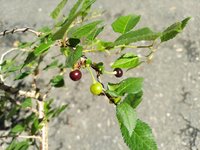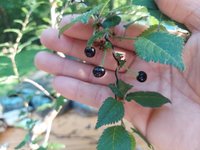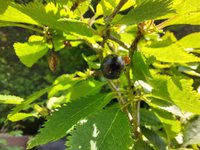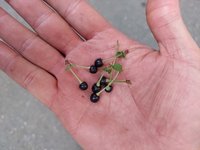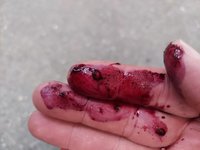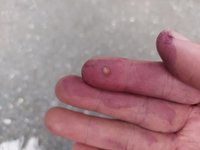You are using an out of date browser. It may not display this or other websites correctly.
You should upgrade or use an alternative browser.
You should upgrade or use an alternative browser.
Kojo-no-mai… what to do with the flowers?
- Thread starter ananta
- Start date
penumbra
Imperial Masterpiece
Let them drop naturally. I have 8 of these and they will divest themselves of flowers without help. I have also never seen fruit develop on them, but it wouldn't matter if they did because they are very vigorous growers.
Pitoon
Imperial Masterpiece
Do you have any other Prunus incisa cultivars?Let them drop naturally. I have 8 of these and they will divest themselves of flowers without help. I have also never seen fruit develop on them, but it wouldn't matter if they did because they are very vigorous growers.
Last edited:
ananta
Seedling
Thank you! Do I pick up after them? I’ve read something somewhere about them getting mouldy.Let them drop naturally. I have 8 of these and they will divest themselves of flowers without help. I have also never seen fruit develop on them, but it wouldn't matter if they did because they are very vigorous growers.
penumbra
Imperial Masterpiece
Yes I do, but don't remember the name. I'll have to check.Do you have any other Prunus incisa cultivars?
Deep Sea Diver
Masterpiece
It’s always the healthier option to clean up dead flowers and leaves ant anll times, but especially during spring, late fall and when wintering over stock.Thank you! Do I pick up after them? I’ve read something somewhere about them getting mouldy.
cheers
DSD sends
penumbra
Imperial Masterpiece
These are my Kojo-no mai that are growing in a bed. I have a couple more in pots. As you can see they have finished blooming. Second picture shows the flowers finished and no fruit. In 4 years I have not seen a seed form.
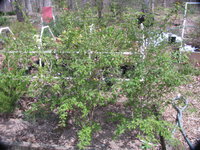
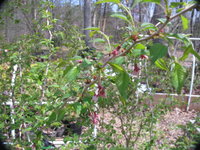
These are the other Fuji cherry that are smaller and have not bloomed as much. No fruit here either. The 2 varieties are about 20 feet apart. Growth habit of this one is dwarf but lacks the zig zag.
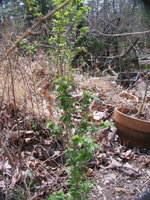
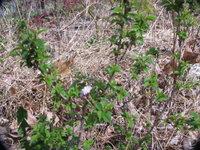


These are the other Fuji cherry that are smaller and have not bloomed as much. No fruit here either. The 2 varieties are about 20 feet apart. Growth habit of this one is dwarf but lacks the zig zag.


Pitoon
Imperial Masterpiece
0soyoung
Imperial Masterpiece
Kojo-no-mai (or 'Little Twist') is a FLOWERING cherry. 'Flowering' is an horticultural designation for trees that produce flowers, but no fruit. IOW, it is a sterile hybrid. The fruit that @Pitoon notes on his plants, will fall off on their own in a few weeks.
Cuttings taken after the first growth has hardened will readily root, which is why one can easily find specimens on their own roots (though I often see them grafted on standards in garden centers).
Cuttings taken after the first growth has hardened will readily root, which is why one can easily find specimens on their own roots (though I often see them grafted on standards in garden centers).
Shibui
Imperial Masterpiece
Interesting concept. I am familiar with a lot of plants designated 'flowering' that still produce fruit and even fertile seeds. I was under the impression that 'flowering' in a plant name just meant the trees are grown more for the flowers than the fruits. Some have fruit that does not taste nice, some taste terrible.'Flowering' is an horticultural designation for trees that produce flowers, but no fruit. IOW, it is a sterile hybrid.
Flowering cherries - Ukon, Snowfall, Fuji and others produce fruit and seedlings in my garden.
Flowering quince - aka Chaenomeles produces fruit here.
Double flowering peaches self seed in the garden beds - note the fruit tastes terrible.
Completely double flowers have stamens replaced by petals. This can also be partial when flowers have multiple whorls of stamens which only partially changed to petals. When all stamens have been replaced obviously the plant produces no pollen and can’t self or cross pollinate others, however it can still be pollinated and bear fruit.
The horticultural term flowering only indicates to the plant having ornamental value over food production. It does not indicate sterility.
A quick search shows that many prunus species are self incompatible. Meaning they have a means of recognising it’s own (or highly related) pollen. Many plants have these type of mechanisms to avoid self pollination and only invest in progeny with the best potential genetic make up.
If @penumbra only grows Kojo-no-mai that are genetically the same they would not produce cherries. I grow three cultivars of Prunus incisa which would explain why mine grow cherries.
The horticultural term flowering only indicates to the plant having ornamental value over food production. It does not indicate sterility.
A quick search shows that many prunus species are self incompatible. Meaning they have a means of recognising it’s own (or highly related) pollen. Many plants have these type of mechanisms to avoid self pollination and only invest in progeny with the best potential genetic make up.
If @penumbra only grows Kojo-no-mai that are genetically the same they would not produce cherries. I grow three cultivars of Prunus incisa which would explain why mine grow cherries.
0soyoung
Imperial Masterpiece
Thanks for that.Interesting concept. I am familiar with a lot of plants designated 'flowering' that still produce fruit and even fertile seeds. I was under the impression that 'flowering' in a plant name just meant the trees are grown more for the flowers than the fruits. Some have fruit that does not taste nice, some taste terrible.
Flowering cherries - Ukon, Snowfall, Fuji and others produce fruit and seedlings in my garden.
Flowering quince - aka Chaenomeles produces fruit here.
Double flowering peaches self seed in the garden beds - note the fruit tastes terrible.
Language is constantly evolving.
Angiosperms are flowering plants. Every species of angiosperm flowers.
I suppose it makes sense to also refer to an angiosperm whose fruit is inedible as 'flowering' but clearly there is more context involved. Like, one could talk about their maple as a 'flowering maple' because it doesn't ever produce tasty fruits.
Once upon a time, 'your' only meant belonging to you and "you are" was a spoken contraction written as "you're". Now it is commonly said and written as simply 'your' regardless of which sense is meant. And so goes with 'flowering'. If it no longer means what it once did, it is what it is in todays usage.
Regardless, kojo-no-mai does not produce fruit. Just a swollen ovary that spontaneously drops.
It is an attractive flowering tree in every possible sense, IMHO.
BTW, get off my grass!
Pitoon
Imperial Masterpiece
I have to disagree with you there. There's plenty of trees dubbed "flowering" that do produce fruit, that are indeed viable. Flowering peaches, plums, nectarines, cherries that are sold as flowering, do produce fruit. I do agree some do not produce fruit or if they do, they are not viable. But those that do produce fruit and are viable that are dubbed flowering do not have a commercial value for consumption, but an ornamental value for the landscape. Hence another way for a nursery to make profit. Regarding propagation, yes they easily root from cuttings. If you see them grafted in the nursery they are most likely grafted onto root stock that grows a lot faster than Prunus incisa.Kojo-no-mai (or 'Little Twist') is a FLOWERING cherry. 'Flowering' is an horticultural designation for trees that produce flowers, but no fruit. IOW, it is a sterile hybrid. The fruit that @Pitoon notes on his plants, will fall off on their own in a few weeks.
Cuttings taken after the first growth has hardened will readily root, which is why one can easily find specimens on their own roots (though I often see them grafted on standards in garden centers).
Technically all Kojo no mai are genetically the same, this is the purpose for cultivar names.If @penumbra only grows Kojo-no-mai that are genetically the same they would not produce cherries. I grow three cultivars of Prunus incisa which would explain why mine grow cherries.
Pitoon
Imperial Masterpiece
Pitoon
Imperial Masterpiece
Pitoon
Imperial Masterpiece
namnhi
Masterpiece
Rob,Let them drop naturally. I have 8 of these and they will divest themselves of flowers without help. I have also never seen fruit develop on them, but it wouldn't matter if they did because they are very vigorous growers.
Am not sure if you up for a trade for a Chinese Quince with one of these? I remember you mentioned in other thread that some of your CQ died over the winter.
Similar threads
- Replies
- 4
- Views
- 816
- Replies
- 5
- Views
- 810
- Replies
- 1
- Views
- 503

